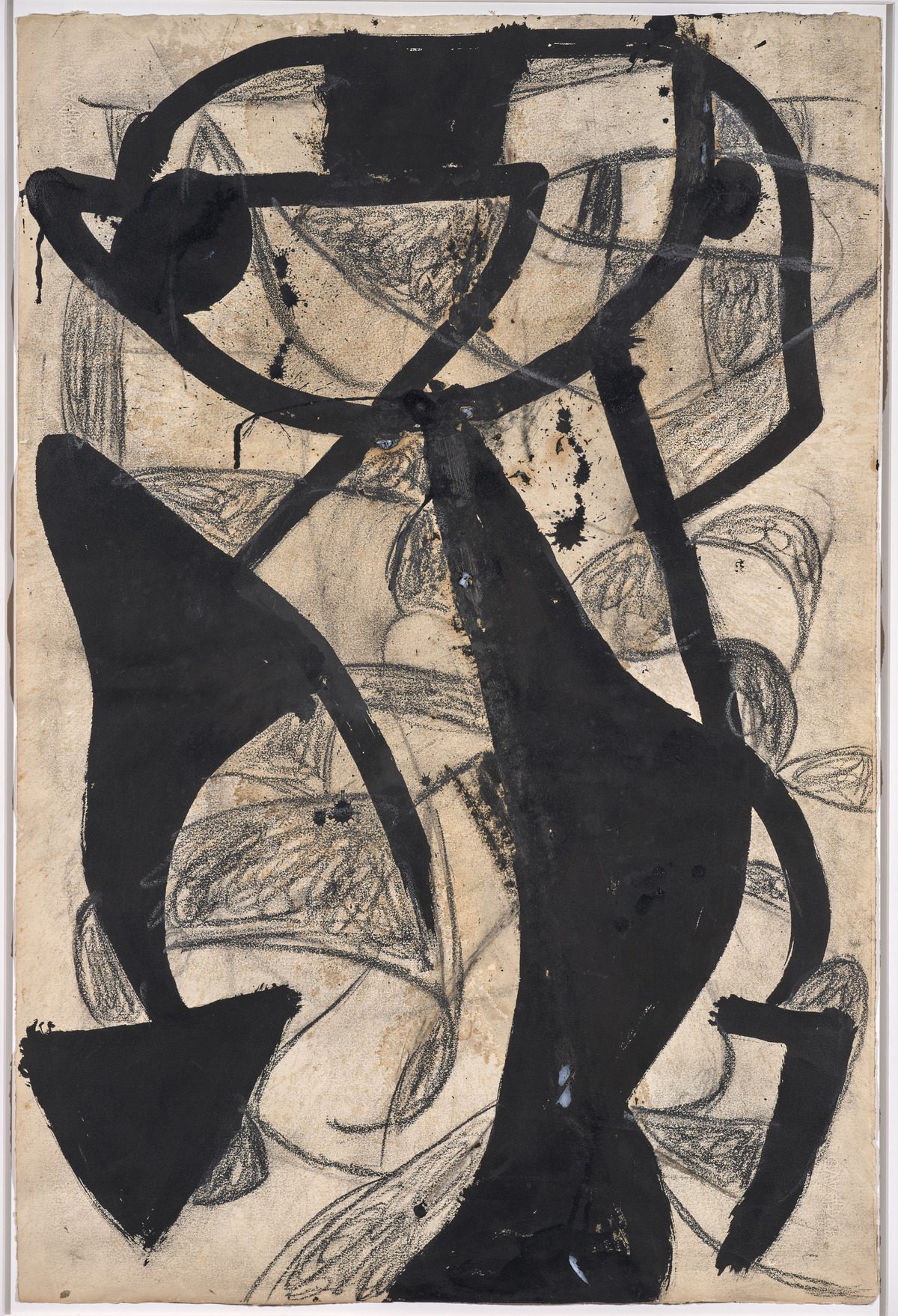Madrid
Joan Miró, Tête, 1976, detail.
Oil on canvas, 100 x 81 cm.
© Successió Miró, 2025.
As we mark the twentieth anniversary of the gallery’s opening in November 2005, we are proud to present Joan Miró / Presence of Black, the second solo exhibition dedicated to Joan Miró (Barcelona, 1893 – Palma de Mallorca, 1983) at Cayón.
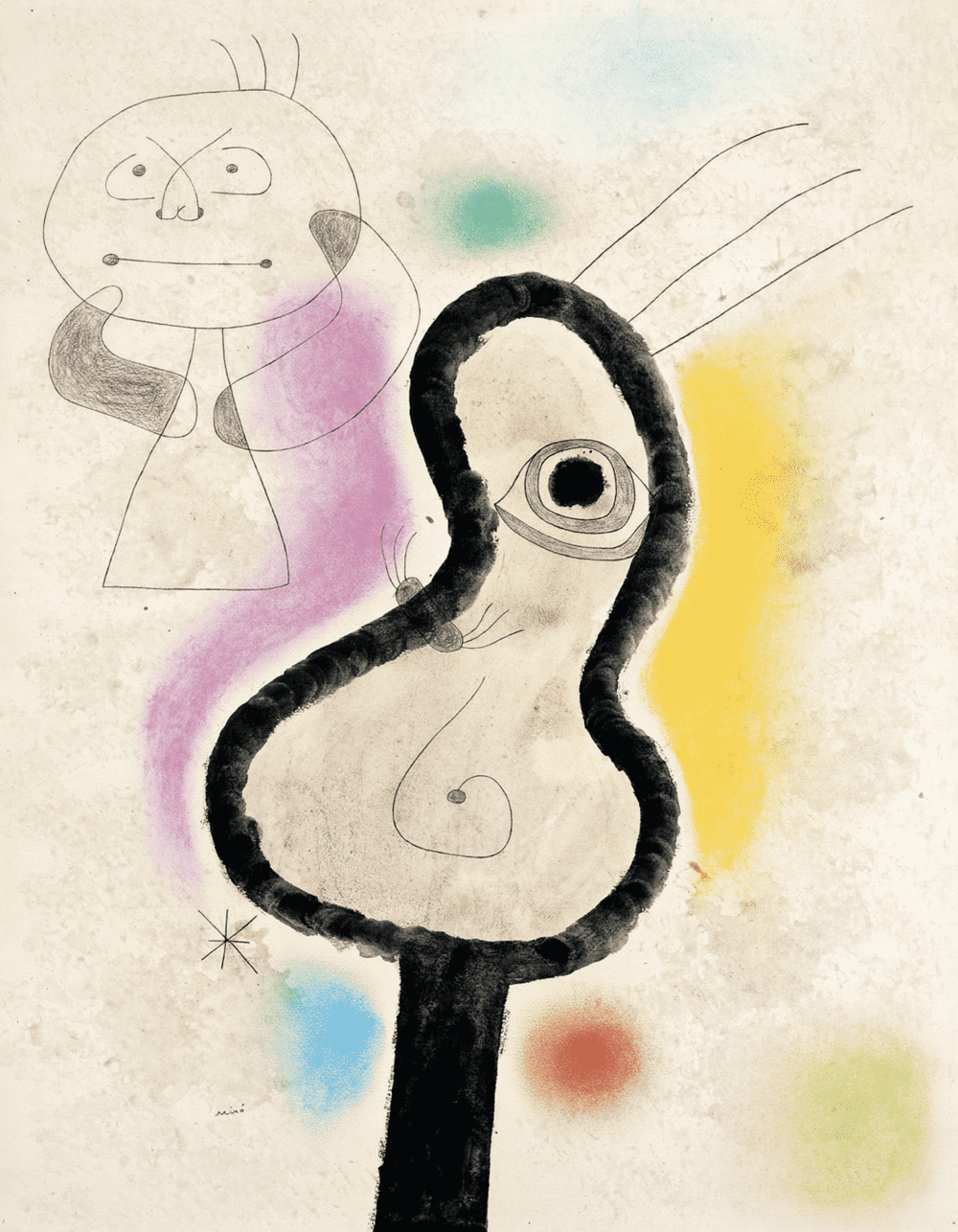
Joan Miró, Personnage, oiseau, étoile, 01/26/1943. Gouache, pastel, and Conté pencil on paper, 65 x 51 cm. ©Successió Miró, 2025.
This project is not—as the title clearly indicates—just an exhibition that brings together a selection of the artist’s works from various collections, which is already impressive in Miró’s case. Instead, it offers a completely new way of looking at Joan Miró through what, for him, was undoubtedly the most sublime and “richest of colors” (Alexandre Cirici): black.
This black—the purest color in Miró’s palette—appears more and more strongly and boldly over the years, especially after his first trip to Japan in 1966. It shows up throughout his entire career. At times, it asserts, through a confident gesture, his creative will and the certainty of the purity of his art; at others—though closely linked to this purpose—it serves as the color that allows him to present reality in its barest, most distilled form, stripped of everything deemed unnecessary.

The exhibition will present a selection of oils (ranging from canvases to paintings on wood or cardboard), drawings, and prints that demonstrate the recurring presence of black. In some cases, for obvious reasons—such as with the monochrome prints—black is everything in the work. The seven prints gathered span 40 years of work, from La Baigneuse and the monumental La Géante or the remarkable Portrait of Miró, created with Marcoussis (all three from 1938), to La Constitución española from 1980, in which the artist clearly expresses his unwavering support for the newly established democratic institutions.
In other works—whether oil, ink, wax, pastel, or gouache—black binds, defines, or dominates everything, embodying Miró’s own idea of “achieving maximum intensity with minimal means.” As Rosa María Malet insightfully points out, this gives these works great power and aggression—an aggression that lies more in their form than in their content. Still, Miró’s aggression remains gentle and full of hope, even though the presence of black is extraordinarily expressive.

Joan Miró, Sans titre, 1949. India ink on crumpled grey cardboard (cover of a ‘Edition Peters’ sheet music catalogue), 23.55 x 31 cm. ©Successió Miró, 2025.
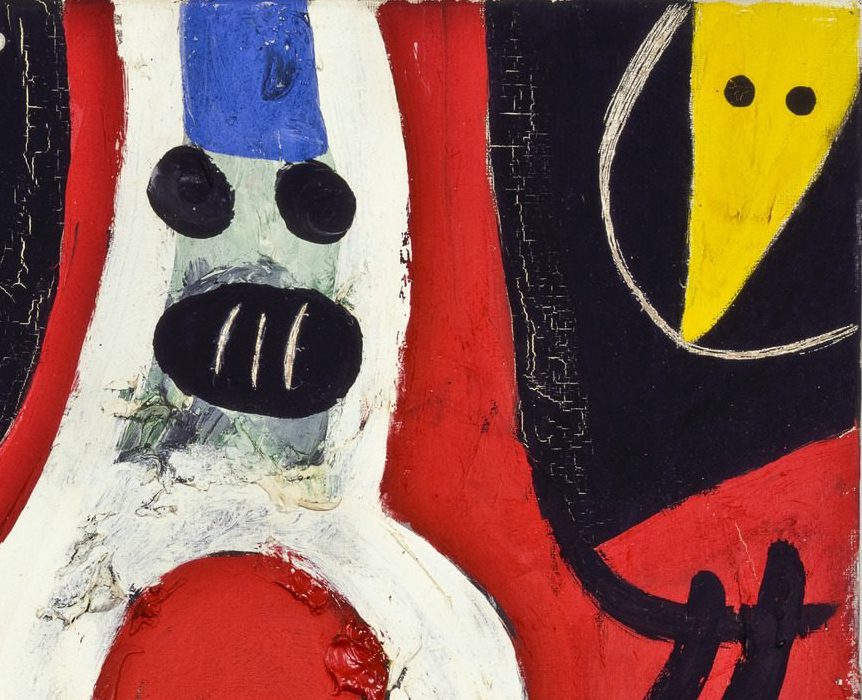
Joan Miró, Femme, oiseaux, constellations, 04/29/1976. Oil on canvas, 73 x 50 cm.
©Successió Miró, 2025.
Such is the case with Femme, oiseaux, constellations and L’Oiseau annonciateur (both from 1976), as well as the striking Tête, also from 1976. These works bring to mind Longhi’s words about the corporeal Caravaggio and his blacks—the “shape of the darkness that interrupts them”—referring to the bodies the Italian painter depicted. These words could just as well apply to Miró, whose figures emerge just as powerfully from his black compositions.
This black is applied either after or before the color spots (in the artist’s own words: “the first stage, the blacks; the other stages come afterward, defined by the blacks”) and it frames the surfaces of other pigments to present that neat—but at the same time chaotic—final vision so characteristic of Miró’s work, where black outlines planes of vivid color.
But beyond acting as a sort of boundary for the underlying color, the thick black stroke appears gentler or more restrained when Miró balances it with the noticeably finer strokes of other colors.
In Personnage, oiseaux (1975), we see two floating black strokes dancing through the space alongside white cloud-like shapes and small patches of color. In the remarkable Personnage, oiseaux, étoile (1943), black guides our gaze toward what we recognize as the character’s head. In Femme, oiseau (1976), a new black presence loses its harshness when set against yellow, red, and green spots—which, we are fortunate to witness in a film that shows the artist working on this wonderful piece—complementing the black with strokes of color.
The same happens with Chien I (1972) and Personnage, oiseaux (1976); meanwhile, in Personnage (1977), the surrealist technique of grattage in which Miró was with Ernst one of the pioneers—takes on a striking effect as it is worked on black cardboard, creating a negative image.
Ultimately, Joan Miró / Presence of Black stands as one of the most ambitious projects Cayón has undertaken since opening to the public in 2005. In any case, the exhibition serves as a tribute to one of the most important, modern, and influential artists in the history of art: Joan Miró.
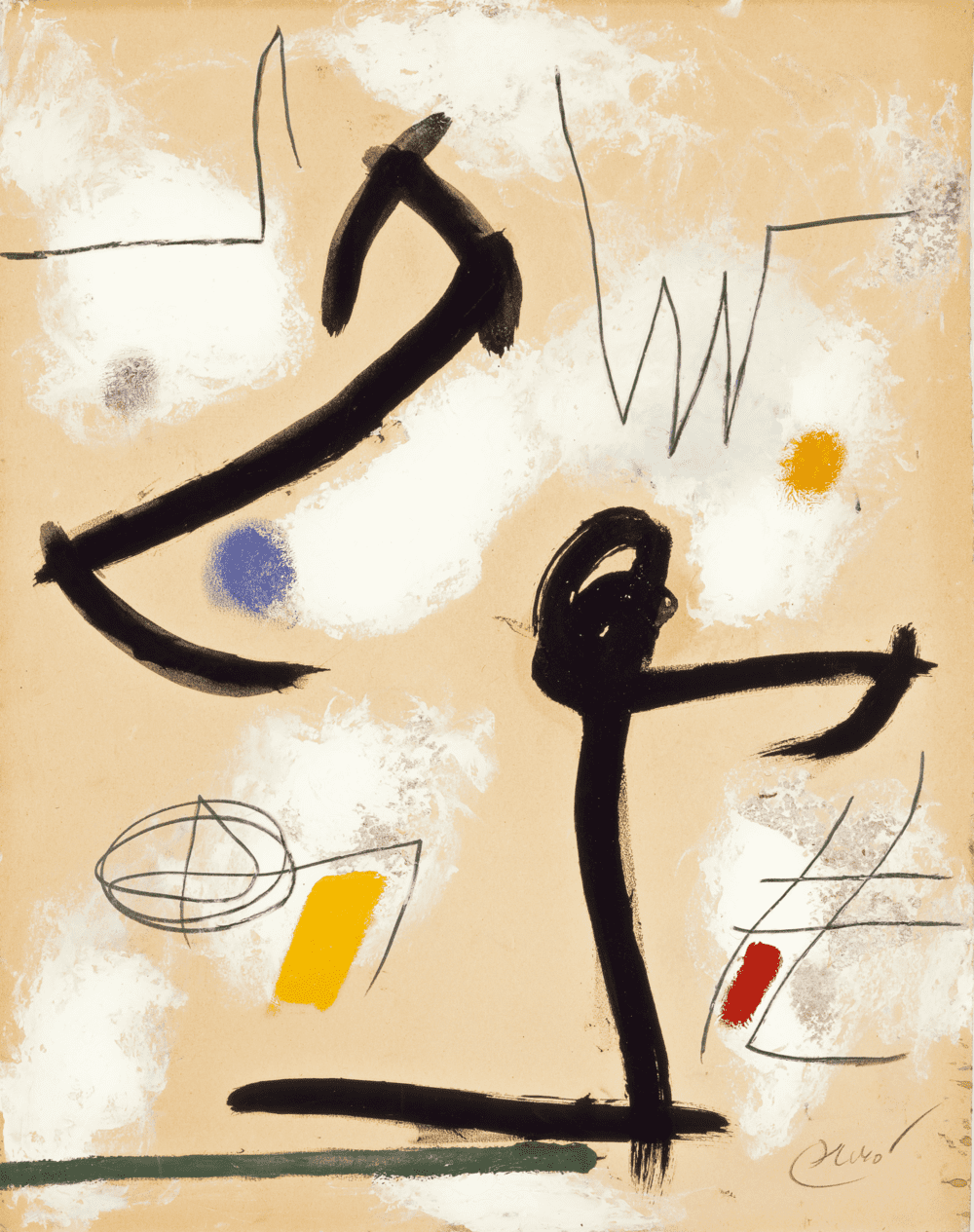
Joan Miró, Personnage, oiseaux, 1975. Oil, India ink, and graphite pencil on cardboard, 63 x 49.3 cm. ©Successió Miró, 2025.
[The exhibition will be accompanied by a publication featuring the previously unpublished text by Joan Punyet Miró “Joan Miró and the Color Black.”]
— Joan Punyet, the artist’s grandson, is CEO of Successió Miró and Vice President of ADOM.

Personnage, oiseau, étoile, 26/01/1943
Gouache, pastel, and Conté pencil on paper
65 x 51 cm.
MI069
Chien I, 10/11/1972
Oil and wax crayons on corrugated brown paper mounted on kraft paper
81,5 x 70 cm.
MI076
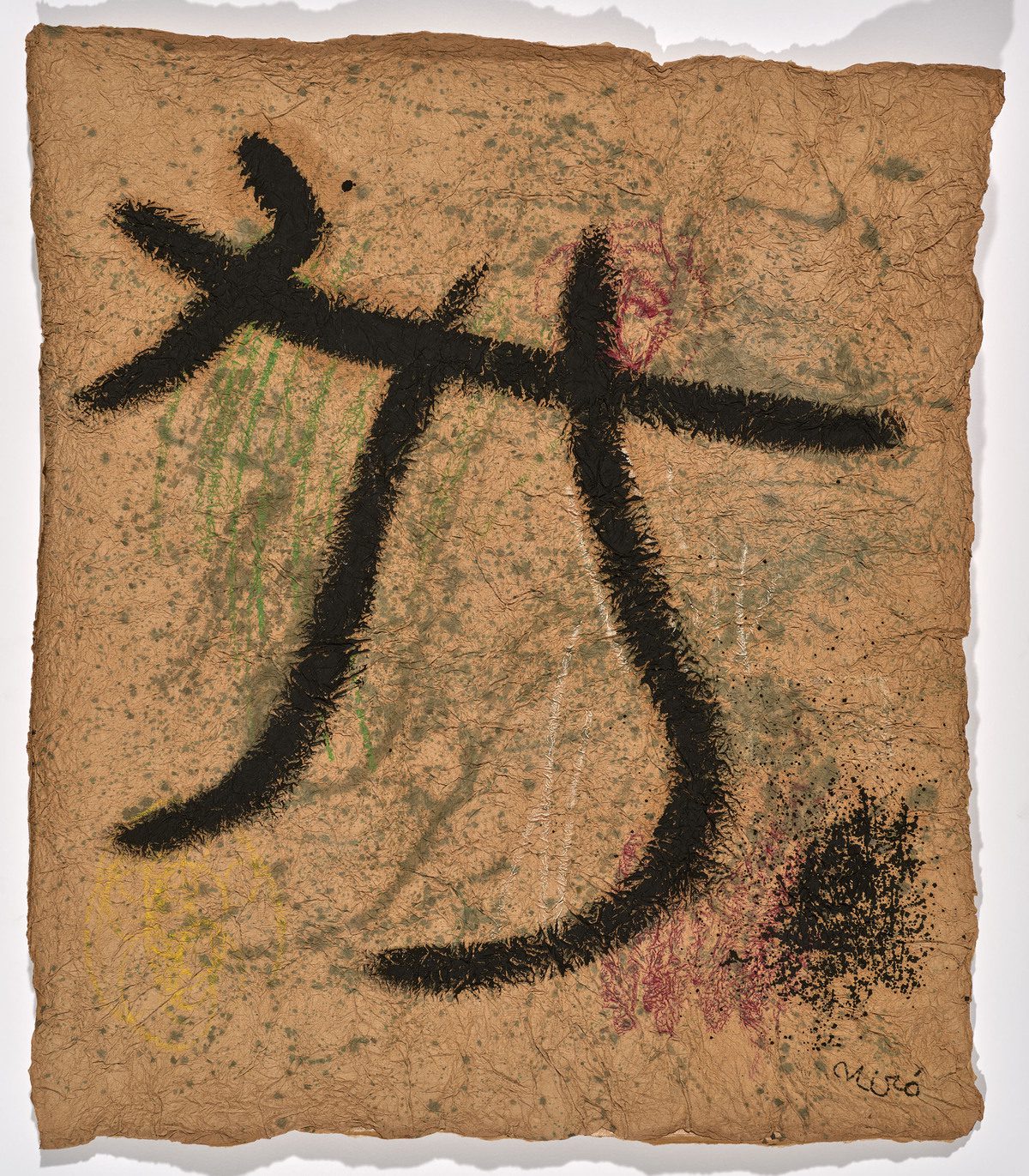

Personnage, oiseaux, 1975
Oil, India ink, and graphite pencil on cardboard
63 x 49,3 cm.
MI068
L'Oiseau annonciateur, 10 de marzo, 1976
Oil and vinyl paint on board
71 x 54,2 x 2 cm.
MI062
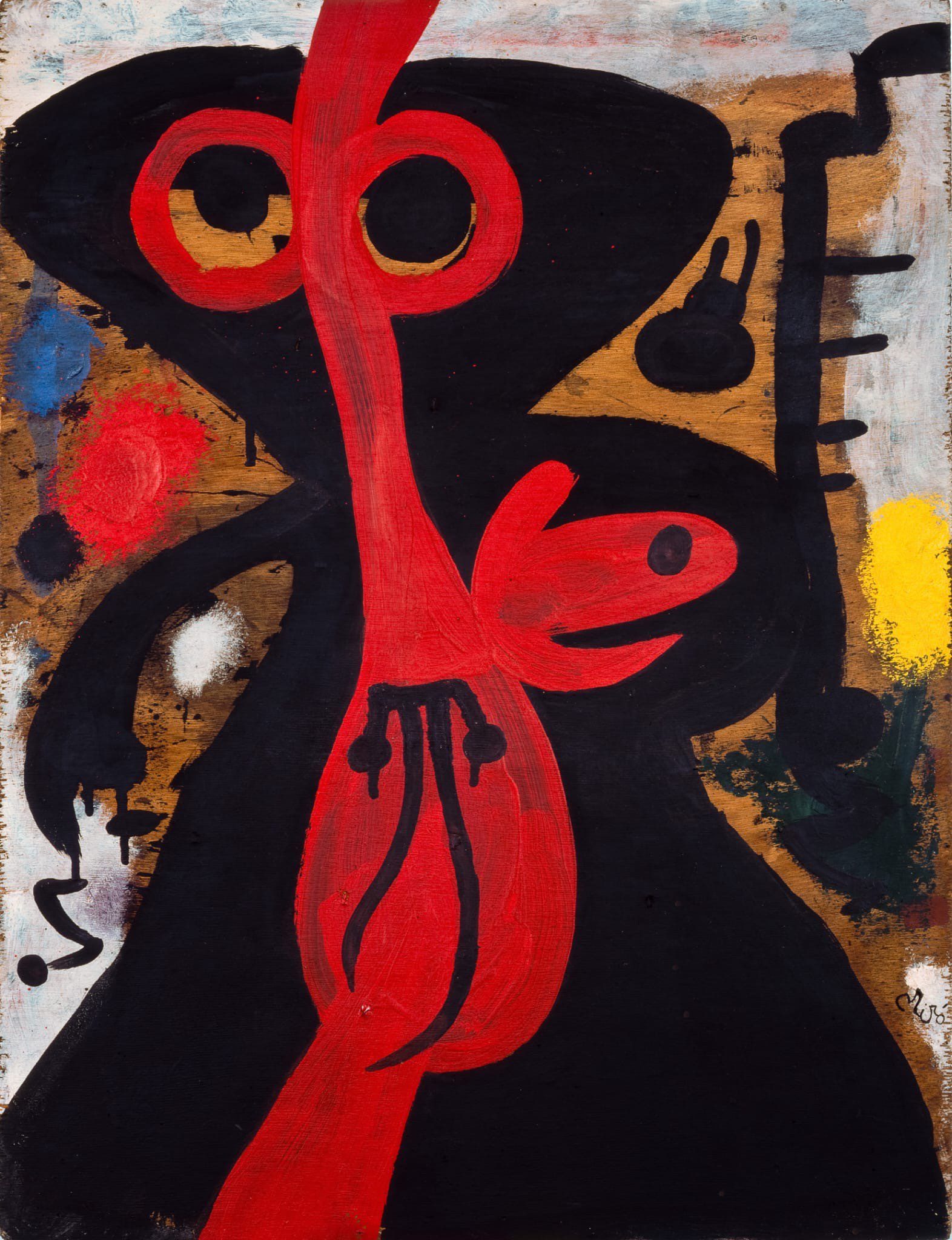
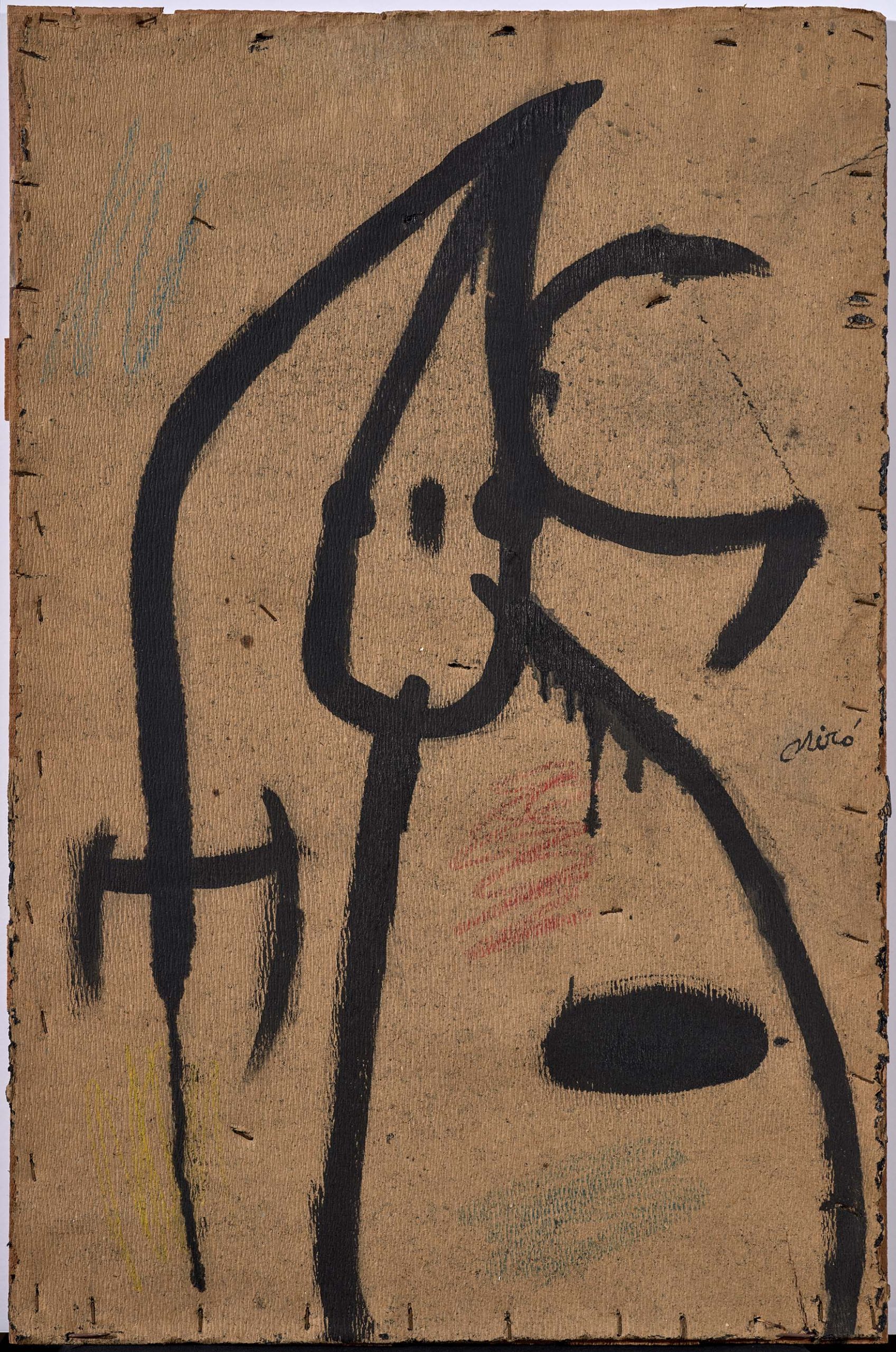
Personnage, oiseaux, 13/04/1976
Oil and wax on tarred paper nailed to wood (box lid)
76,5 x 50 cm.
MI077
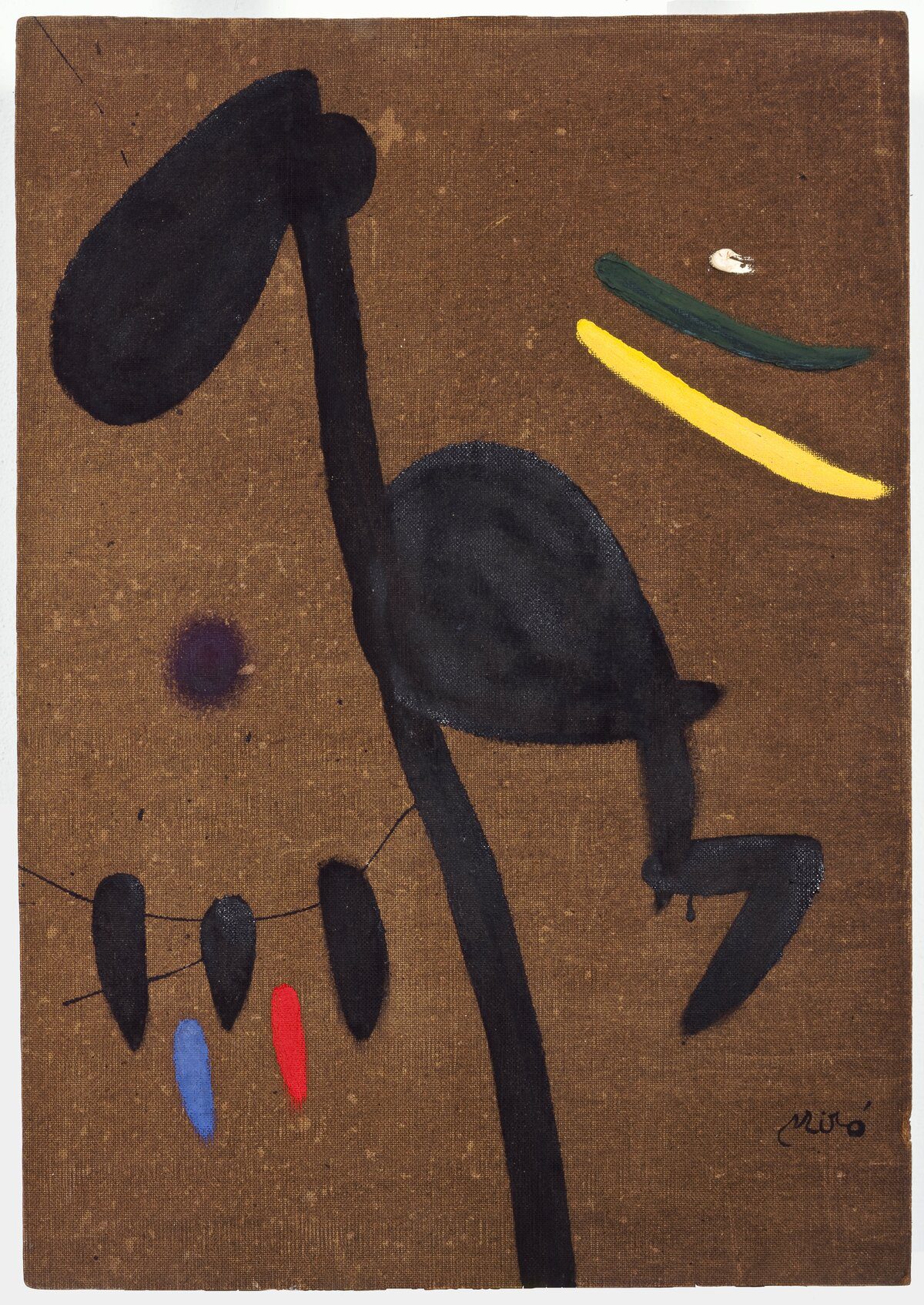
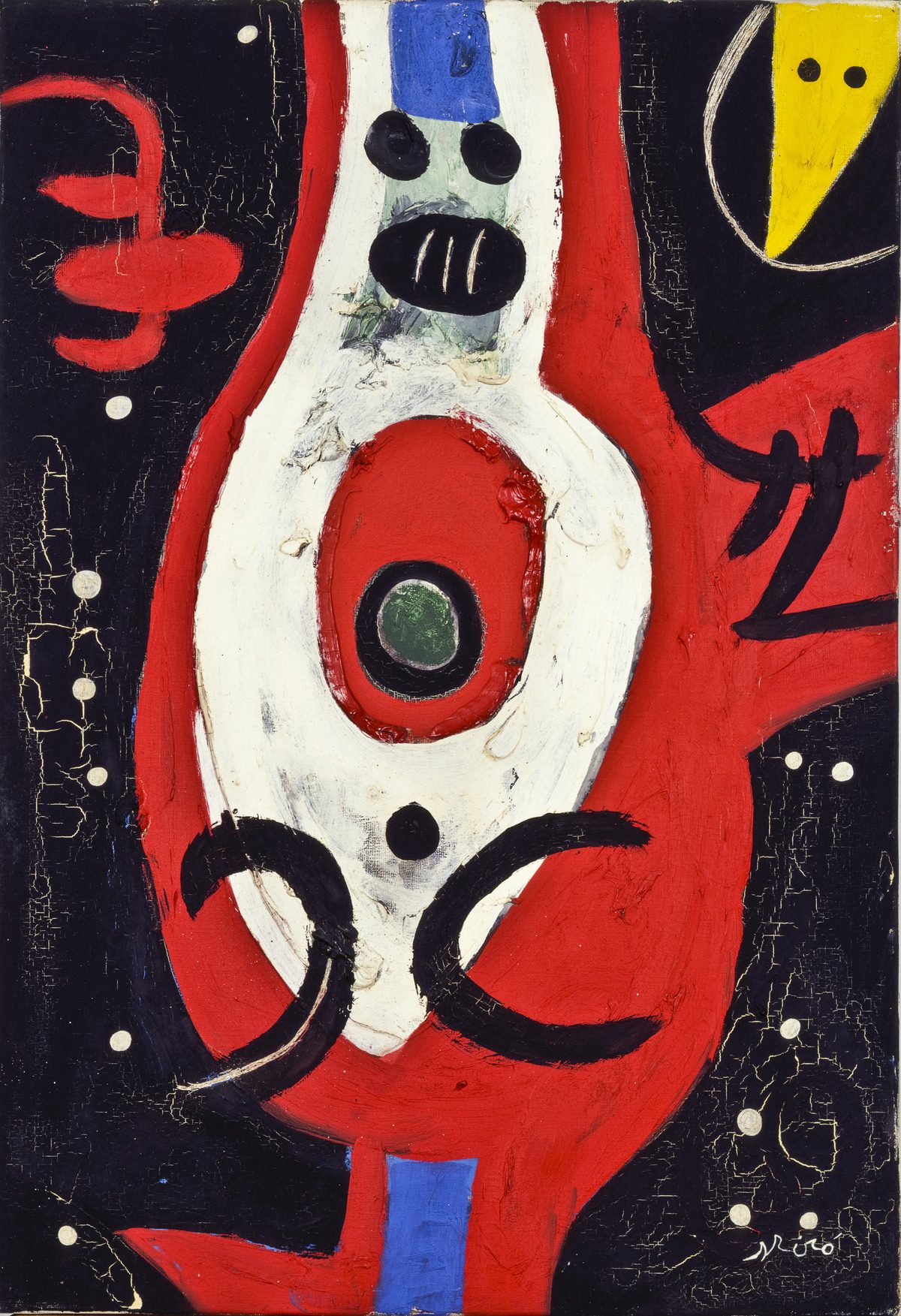
Personnage et oiseau entourés de rossignols, 17/07/1976
Oil, pastel, and wax crayons on cardboard
79 x 59 cm.
[MI072]
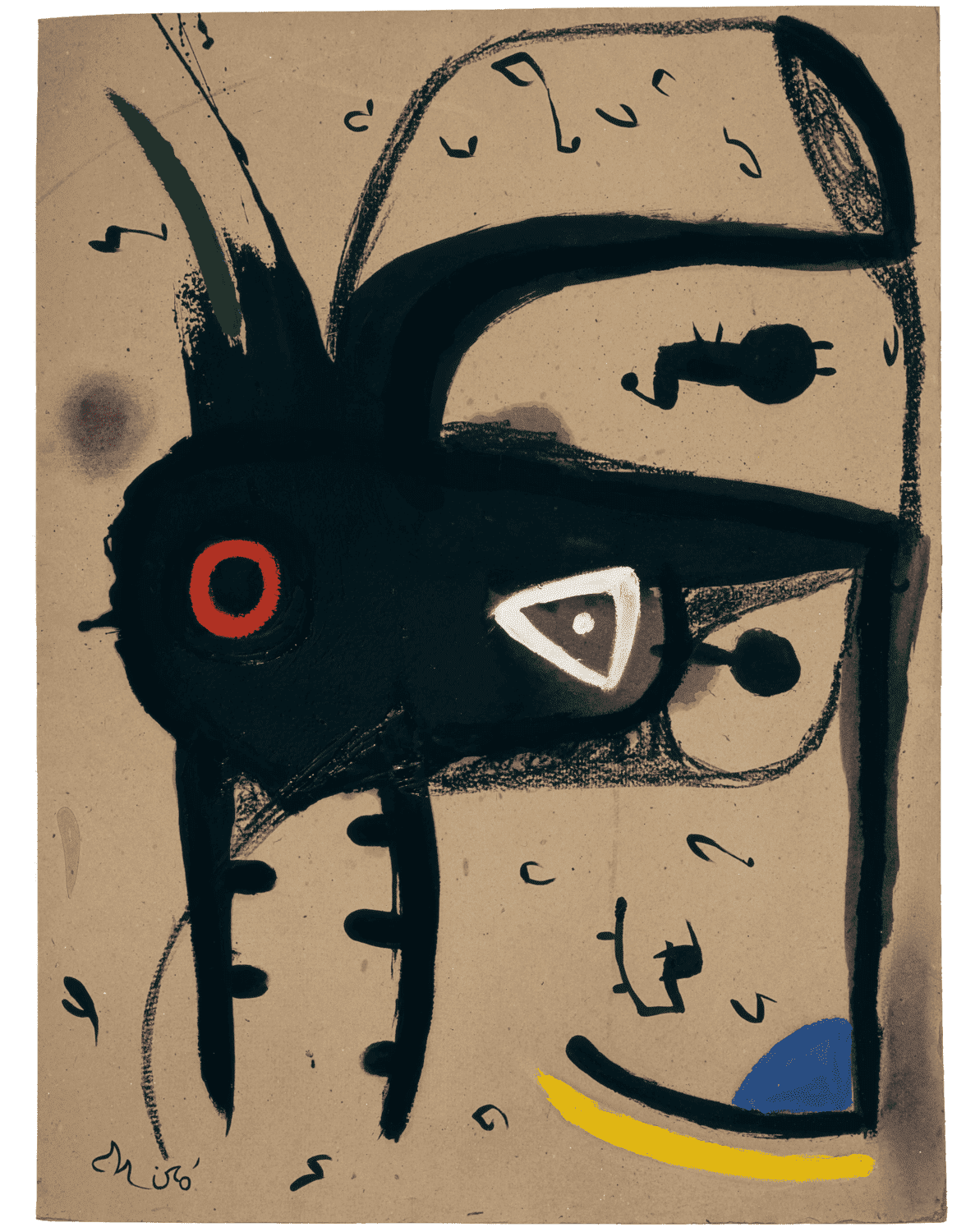
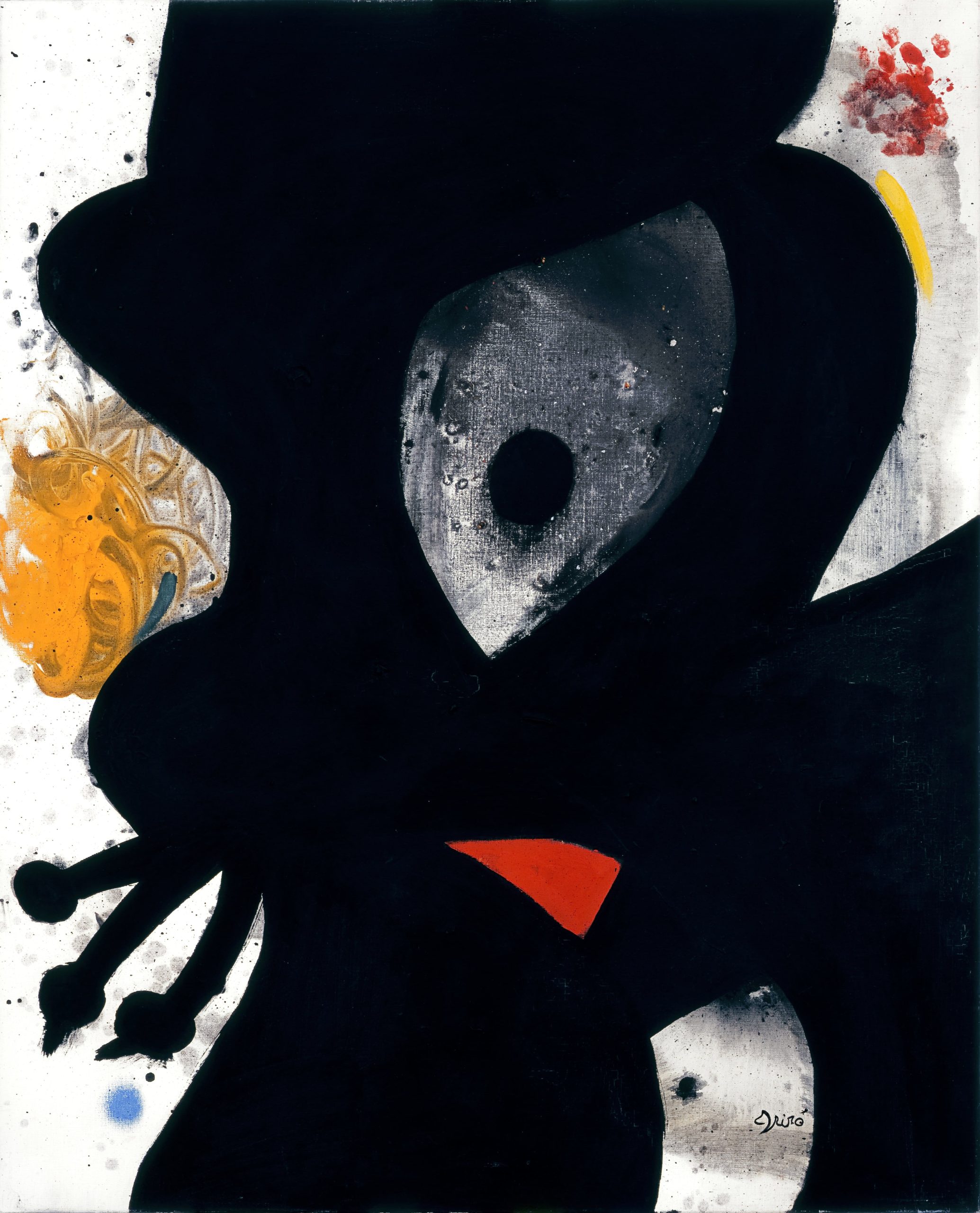
Personnages, oiseau, étoiles, 17/IV/1978
Wax crayons and graphite on cardboard
52 x 38,8 cm.
MI087

